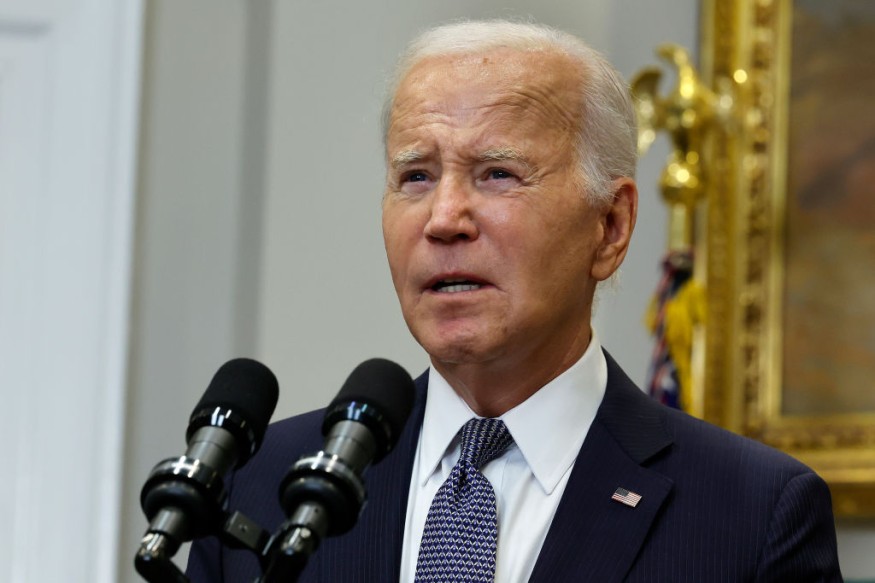Biden's New Student Loan Forgiveness Plan: How Debt Creates Financial Risk and Instability
With the intention of beginning to erase people's loans as early as this autumn, the Biden administration is working swiftly to implement its new plan for student loan forgiveness.

According to analysts, the move may be very important in the next presidential election. According to higher education scholar Mark Kantrowitz, topics that "present a sharp contrast between Democrats and Republicans are more likely to impact the election, especially if the issues affect voter turnout for one party over the other." That includes the discharge of student loans, he added.
Race to Student Debt Forgiveness
The Supreme Court blocked President Joe Biden's pledge to eliminate student loan debt during the 2020 presidential campaign in June. The conservative judges declared Biden's $400 billion debt cancellation scheme unlawful.
Following it, the president ordered the U.S. Department of Education to review its current jurisdiction to waive student loan debt. During Biden's administration, the department paid off 4 million people's student loans, totaling $146 billion in help, mostly by strengthening the current loan relief programs.
However, Biden has been under a lot of pressure to take something. During a Madison, Wisconsin speech on Monday, Biden said Republicans and the Supreme Court were to responsible for the cancellation of his initial rescue package.
Although it is more limited than his first proposal, the president unveiled the specifics of his Plan B for student loan forgiveness, which may still benefit tens of millions of Americans.
Rather than canceling loans for almost all federal student loan debtors, this policy directs relief toward certain populations, such as those who have graduated from low-quality colleges and are facing financial difficulties. In the meanwhile, the scheme allows some 25 million individuals to receive interest on their debt forgiveness.
Debt Relief in November?
Kantrowitz believes the Biden administration will make an effort to provide additional assistance to citizens before the November elections.
In a recent study, 48% of voters stated that they will vote for candidates who will waive their student loan debt in the 2024 presidential and legislative elections. In mid-March, 2,601 Gen Z and millennial respondents were among the 3,812 registered voters surveyed by the research and consultancy firm SocialSphere.
Biden may benefit most from forgiving student loans among young voters, a group with whom he has had difficulty. According to the same study, around 70% of Gen Z respondents claimed they would be voting for the elimination of student loan debt.
By focusing on this topic, Biden may set himself apart from Donald Trump, his probable Republican opponent, who has a history of opposing student debt reduction.
During his administration, the former president advocated for the repeal of the well-liked Public Service Loan Forgiveness initiative, which was enacted by President George W. Bush in 2007. Additionally, Trump supported the Supreme Court's decision to overturn Biden's proposal.
Through an executive move, Biden announced his initial proposal to cancel student loans in August 2022, hoping to expedite the relief process. After applying, borrowers were informed that they may anticipate relief in six weeks. Naturally, legal challenges halted that timeframe, which was ultimately rejected by the Supreme Court.
Biden has now shifted his focus to the negotiated rulemaking process in the hopes that it will be more difficult for the judges to block him this time. But it's a multi-step process that might take a while. It entails a meeting of the negotiation committee, the proposal of a rule, its publication in the Federal Register, and a period of public discussion. Following these actions, the U.S. The Department of Education may make available the final regulation
Now that the talks have concluded, the Biden administration is getting ready to present its plan. The final regulation from the Education Department would potentially be released this summer, according to Kantrowitz.
How Does Debt Create Financial Risk and Instability?
The burden of student loans can significantly impact individuals' financial stability, hindering their ability to invest, save, or contribute to the economy in other ways. This heavy debt load can lead to various economic challenges, including reduced consumer spending, decreased homeownership rates, and limited opportunities for entrepreneurship among young adults.
This creates financial risk and instability for borrowers, particularly those from low-quality colleges facing financial difficulties. Student loan debt represents a significant financial burden that can impede their ability to achieve economic mobility. Without relief, these individuals may struggle to meet their monthly payments, leading to default or delinquency, further exacerbating their financial instability.
Moreover, the looming specter of student loan debt can deter young people from pursuing higher education altogether or cause them to make decisions based solely on financial considerations rather than their interests or career aspirations. This can have long-term implications for both individuals and society as a whole, perpetuating socioeconomic inequality.
At a broader level, the widespread prevalence of student loan debt can pose systemic risks to the economy if large segments of the population are unable to repay their loans. This can lead to broader economic instability, affecting financial markets, consumer confidence, and overall economic growth.
Addressing the question of how debt creates financial risk and instability is crucial. Targeted relief measures can alleviate the burden on affected individuals, mitigate systemic risks, and promote economic resilience and prosperity.
Related Article : Tick-Tock: Deadline for Student Loan Forgiveness Looms is April 30
© 2025 MoneyTimes.com All rights reserved. Do not reproduce without permission.










